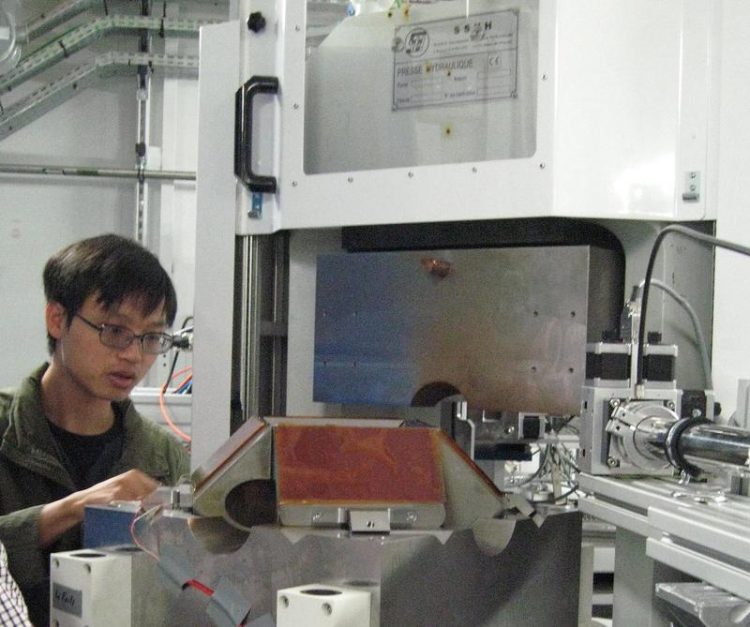Viscosity measurements offer new insights into the earth's mantle

Dr. Longjian Xie preparing an experiment at the electron synchrotron SOLEIL in Saint Aubin near Paris. Photo: private
In addition, the data also provides indications that the lower mantle contains larger reservoirs of materials that originated in an early magma ocean and have remained unchanged to this day. The researchers have presented their findings in the scientific journal Nature Communications.
For the viscosity measurements, the scientists used a heating element they developed, based on a boron-doped and therefore electrically conductive diamond.
For example, they were able to examine material samples in a multi-anvil press at pressures of up to 30 giga-pascals and at temperatures of almost 3,000 degrees Celsius – i.e. under conditions similar to those prevailing in the lower mantle of the early earth.
The samples were selected for composition similar to the main minerals present in the lower mantle. Using a super-fast camera (1000 frames/second), the melting processes taking place in the multi-anvil press were observed, and the viscosity of the molten material was measured.
The data obtained proved to be particularly revealing with regard to the magma ocean, from which the earth's mantle formed over the course of the earth's history.
Based on their viscosity measurements, the researchers were able to show that the crystallization of the magma ocean was largely dependent on the level of pressure. This resulted in a so-called fractional crystallisation at a depth of around 1,000 kilometres.
“Our measurement data support the assumption that a rock layer containing a high proportion of the mineral bridgmanite was formed at this depth due to crystallization processes. This layer could be responsible for the high viscosity observed at this depth in previous geophysical investigations,” explains Dr. Longjian Xie, a post-doctoral researcher at BGI and lead author of the study now published.
The other members of the international team of authors are working in Japan, at Okayama University and the electron synchrotron Spring-8, and in France at Université Clermont Auvergne and the synchrotron SOLEIL in Saint Aubin.
Dr. Longjian Xie
Bavarian Research Institute of Experimental Geochemistry & Geophysics (BGI)
University of Bayreuth
Phone: +49 (0)921 55-3743
E-Mail: Longjian.Xie@uni-bayreuth.de
Longjian Xie et al.: Formation of bridgmanite-enriched layer at the top lower-mantle during magma ocean solidification. Nature Communication 11, 548 (2020). DOI: https://doi.org/10.1038/s41467-019-14071-8
Media Contact
More Information:
http://www.uni-bayreuth.de/All latest news from the category: Earth Sciences
Earth Sciences (also referred to as Geosciences), which deals with basic issues surrounding our planet, plays a vital role in the area of energy and raw materials supply.
Earth Sciences comprises subjects such as geology, geography, geological informatics, paleontology, mineralogy, petrography, crystallography, geophysics, geodesy, glaciology, cartography, photogrammetry, meteorology and seismology, early-warning systems, earthquake research and polar research.
Newest articles

Largest magnetic anisotropy of a molecule measured at BESSY II
At the Berlin synchrotron radiation source BESSY II, the largest magnetic anisotropy of a single molecule ever measured experimentally has been determined. The larger this anisotropy is, the better a…

Breaking boundaries: Researchers isolate quantum coherence in classical light systems
LSU quantum researchers uncover hidden quantum behaviors within classical light, which could make quantum technologies robust. Understanding the boundary between classical and quantum physics has long been a central question…

MRI-first strategy for prostate cancer detection proves to be safe
Active monitoring is a sufficiently safe option when prostate MRI findings are negative. There are several strategies for the early detection of prostate cancer. The first step is often a…



